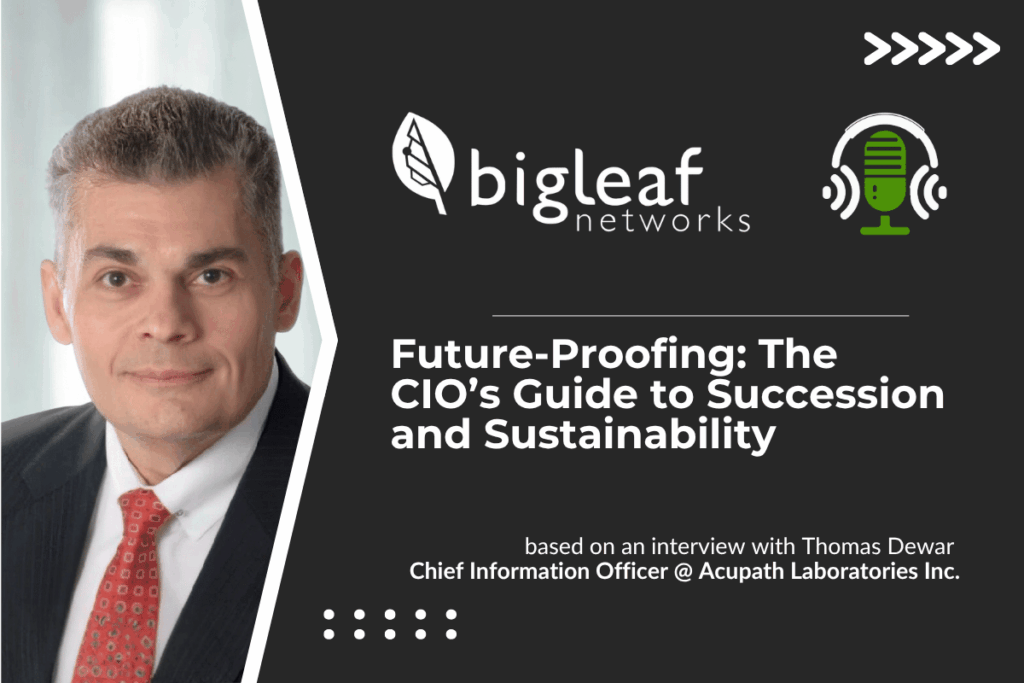Every leader eventually moves on—but their systems should keep working without them. Thomas Dewar treats CIO succession planning for IT sustainability as an engineering discipline as much as a leadership practice.
Designing for the Next Person
Dewar teaches his team to document everything they build—network maps, application dependencies, and decision rationale. When the next CIO arrives, they inherit clarity instead of chaos.
“Design for the next person.”
That, he says, is the definition of sustainability. His approach mirrors the philosophy behind Bigleaf’s How It Works page, where clear architecture and transparency help future teams understand the platform without guesswork.
Simplicity as a Legacy
Dewar avoids over-engineering solutions that depend on tribal knowledge. By keeping architecture simple, he ensures that operations can continue smoothly during leadership transitions. His process aligns with Bigleaf’s Connect Care platform support, which provides managed continuity to simplify complex IT handoffs.
Building Continuity Through Culture
Succession isn’t just about documentation—it’s about mentorship. Dewar encourages knowledge-sharing and cross-training so that critical skills don’t live in one person’s head. This mindset echoes Bigleaf’s approach to standardized configurations, designed to reduce risk and make network management predictable, regardless of who’s at the helm.
Scaling Sustainability Through Planning
True succession planning goes beyond continuity—it’s about adaptability. Dewar emphasizes preparing systems for the next decade, not just the next leader. By aligning technology and process maturity, CIOs can make their teams more resilient to turnover, market change, and new compliance demands. It’s a model reflected in Bigleaf’s Internet Optimization overview, where consistent design allows networks to perform optimally through evolving business conditions.
Takeaways
- Document everything you build.
- Design for simplicity and clarity.
- Mentor successors before they’re needed.
- Standardize processes to reduce risk.
- Treat continuity as a core IT metric.
Dewar’s vision reframes succession planning as a design principle rather than a management task. Sustainable IT means ensuring that every system—technical and human—can endure transition without disruption. Balancing innovation with clarity, training with trust, and systems with culture is what defines CIO succession planning for IT sustainability. The result is an organization that runs seamlessly, no matter who’s leading.
Related Content
- What Is the Data and Information Strategy for Cloud-Based Applications Today?
- Building Healthcare AI Through Robust Data Foundations
- Embracing Resiliency and Efficiency Through Cloud Migration
- Future-Proofing: The CIO’s Guide to Succession and Sustainability
- Go Beyond the Connection on Captivate
- Subscribe to the LinkedIn Newsletter
- YouTube Podcast Playlist
